A while ago we took ourselves off for a short trip to Tivoli, just east of Rome. Tivoli is famous for the ornate Renaissance water gardens of the Villa d’Este – so famous as a place of refined pleasure that people everywhere appropriated the name. Hence the Tivoli Gardens in Copenhagen, and various Tivoli theatres around the world. Apparently there is a suburb of Kingston, Jamaica called Tivoli Gardens which is ravaged by drugs and poverty, so the name didn’t always help.
Tivoli is one of the fortified towns on outlying hills at the base of the Apennines where the mountains run close to the coastal plain. They belonged to the various powerful Roman families in the Middle Ages and Renaissance and from time to time when a family’s fortunes were temporarily on the wane they would retreat to their town and put the fortifications to use defending against their rivals.
Much earlier, it was an independent Latin city in the early years of ancient Rome, and after its absorption into the Roman state it became a location where wealthy Roman families built villas.
Today, Tivoli is administratively and culturally part of greater metropolitan Rome. So the food is good and the traffic is crazy.
The Villa d’Este
To start with the gardens, then. These are attached to a large Renaissance palace called the Villa d’Este. The d’Este family were rulers of Ferrara in the region of Emilia-Romagna, in northern Italy, quite a long way from Rome. The d’Estes and their close allies, the Gonzaga family of Mantua, always tried to ensure that at least one of their number held high office in the church, doubtless with an eye to influence in the Papal curia as their small states tried to maintain an uneasy semi-independence from Rome (which did them no good in the end, both states eventually being brought under direct Papal rule). To gain such advancement for their sons they dealt with the church more on a material than a spiritual basis, making monetary and military contributions as required.
The chap who built the Villa d’Este in Tivoli was Cardinal Ippolito d’Este. He was actually a grandchild of the Borgia pope Alexander VI, being the son of Alexander’s famous daughter Lucrezia Borgia, who married one of the d’Este dukes, and who apparently doesn’t deserve the infamy inflicted on her by history. Unlike her brother Cesare, who absolutely does. Anyway, young Ippolito was clearly a talented little fellow who was marked for future greatness, being appointed (purely on merit, of course) as Archbishop of Milan at the age of ten. Ippolito grew up to be enormously wealthy, a cardinal and a generous patron of the arts.
He was very keen to become Pope, but kept missing out. As it transpired, he was a man out of his time. Enormously rich cardinals leading Lucullan lifestyles had regularly been waved into the papacy in former generations, not least because of the huge bribes involved. But Ippolito’s misfortune was to be around during the Counter-Reformation and the Council of Trent, and that sort of thing didn’t quite fit the zeitgeist. So after one of his failed attempts he was awarded a consolation prize in the form of the governorship of Tivoli, which ended up suiting him fairly well, although he kept nominating himself whenever there was a vacancy in the Holy See.
The visit begins in the Villa d’Este, through which most visitors sprint in order to get to the gardens, but if you want to see inside a 16th Century palace built and decorated by an extremely wealthy patron of the arts, this is the place for you. After descending a couple of floors and going through multiple frescoed rooms, you eventually emerge onto a terrace above the gardens, which descend down the side of a steep hill. Being at the foot of the Apennines, Tivoli has many rivers and springs and these were all harnessed by some very talented hydraulic engineers to feed an extraordinary number of fountains. After falling into disrepair in the 18th and 19th Centuries, most of the fountains have now been restored.
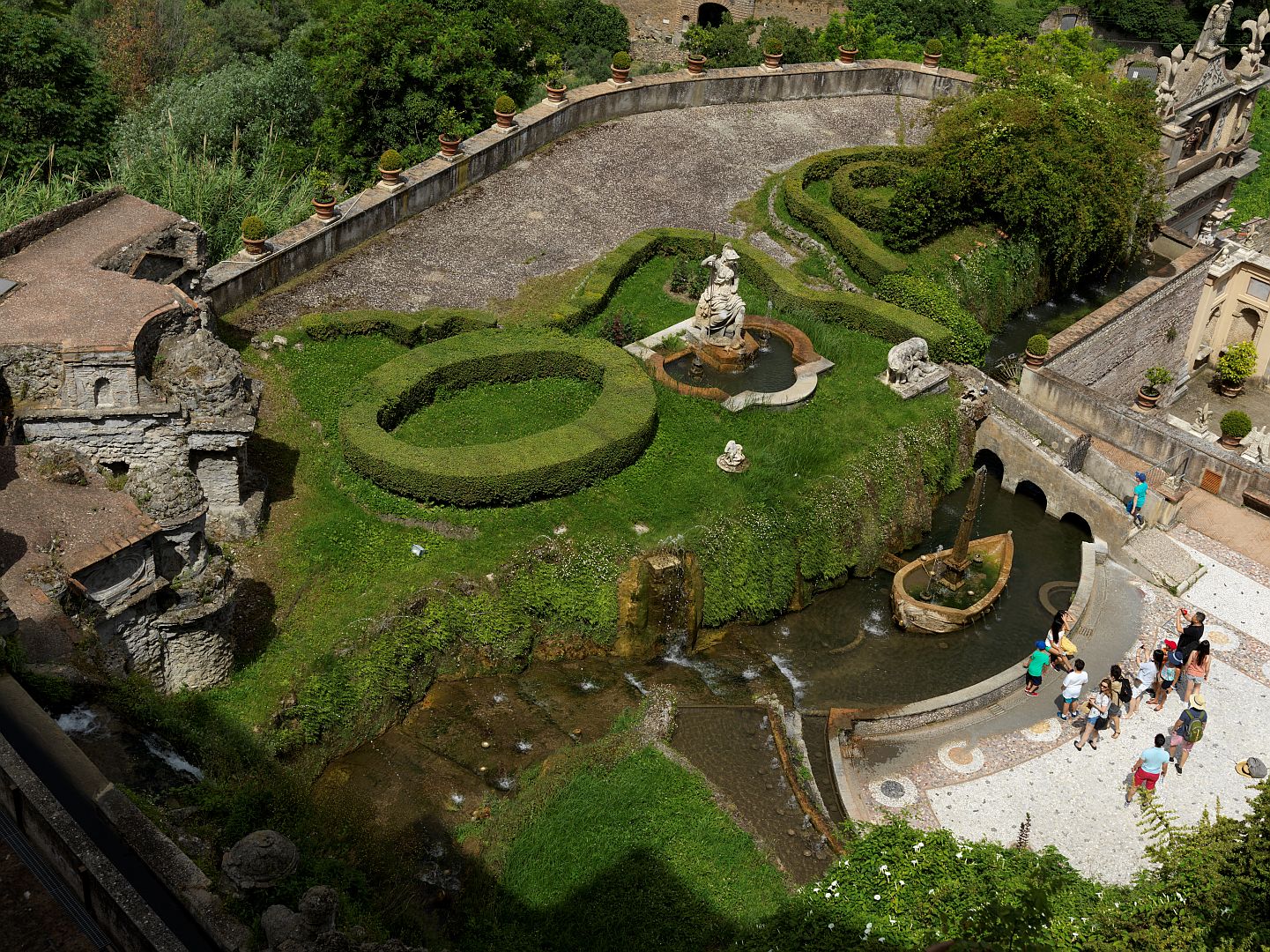
Looking down at the gardens from the villa I noticed that several picturesque areas were fenced off, which initially seemed a bit disappointing until I realised that this was actually a good thing. This way there would at least be a few places that were not swarming with elderly tour groups and people waving selfie sticks. There was even a picnicking mother-and-daughter pair who parked themselves right in the middle of the view of the main fountain. And I’m ashamed to report that overhearing them later, I realised they were Australians. Sorry about that.
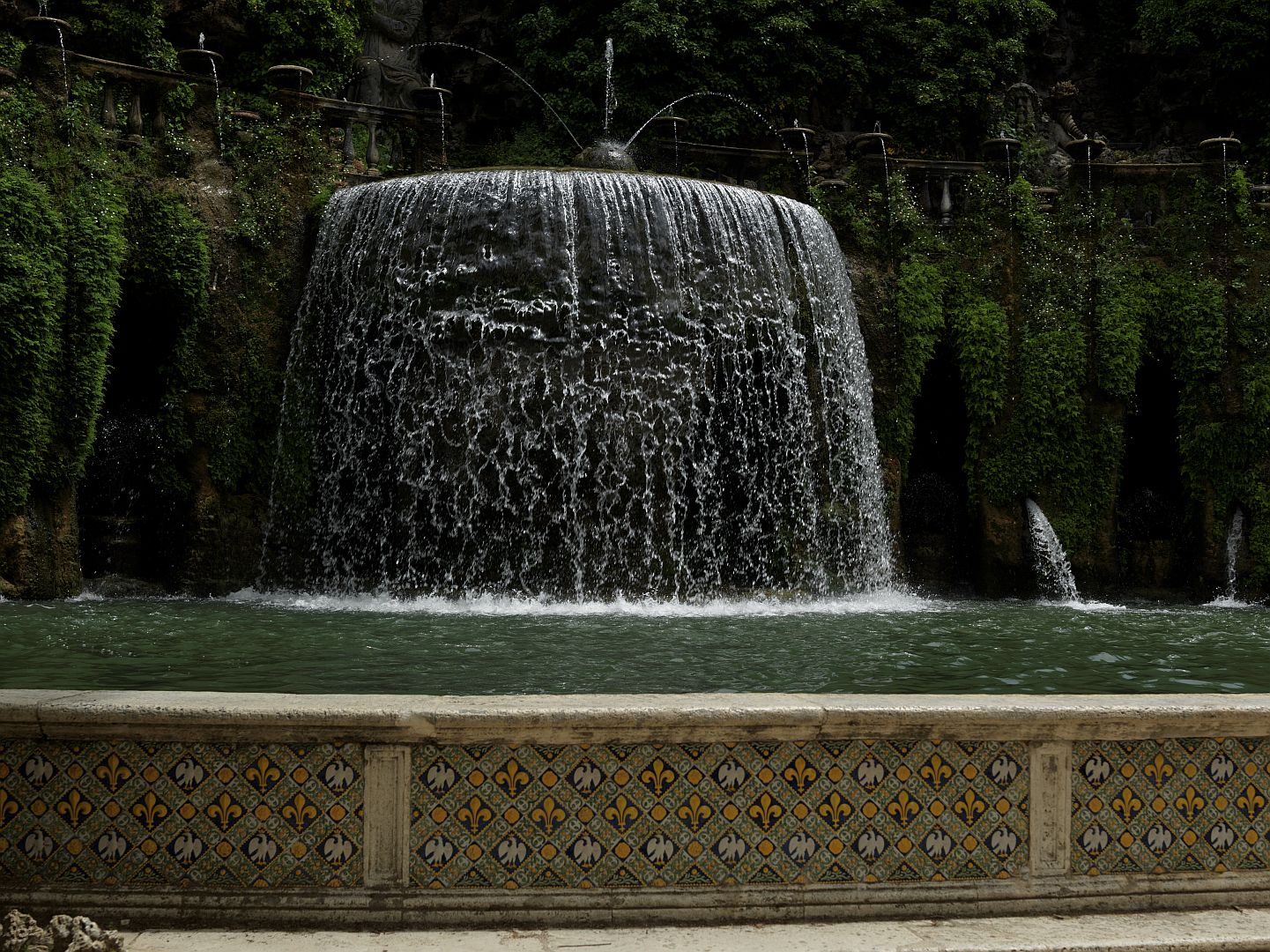
Time and again my attempts to get a decent picture were obstructed by couples grinning at their phones, or elegant young women making duck-faces while their obedient boyfriends took photos which would be critically reviewed, rejected, retaken, and resubmitted for approval. We even saw a young couple set their camera up and do a short dance routine. Presumably this will in due course be edited into a composite video taking in all the major tourist spots of Italy, and uploaded to YouTube. Fortunately in bright sunshine at ISO 100 you only need the narcissists to stay out of the way for 1/500 of a second at f/8.

After spending about an hour and a half in the villa and the gardens we made our way to a space above the main fountain where there is a hydraulic organ (meaning that air is forced through the pipes by water pressure) and which plays every two hours. The original seems to have been quite impressive with various mechanical effects, but having fallen apart long ago it was replaced this century by a completely new system which just plays music. However it does play actual Renaissance dance tunes by Susato and the like so one shouldn’t complain.
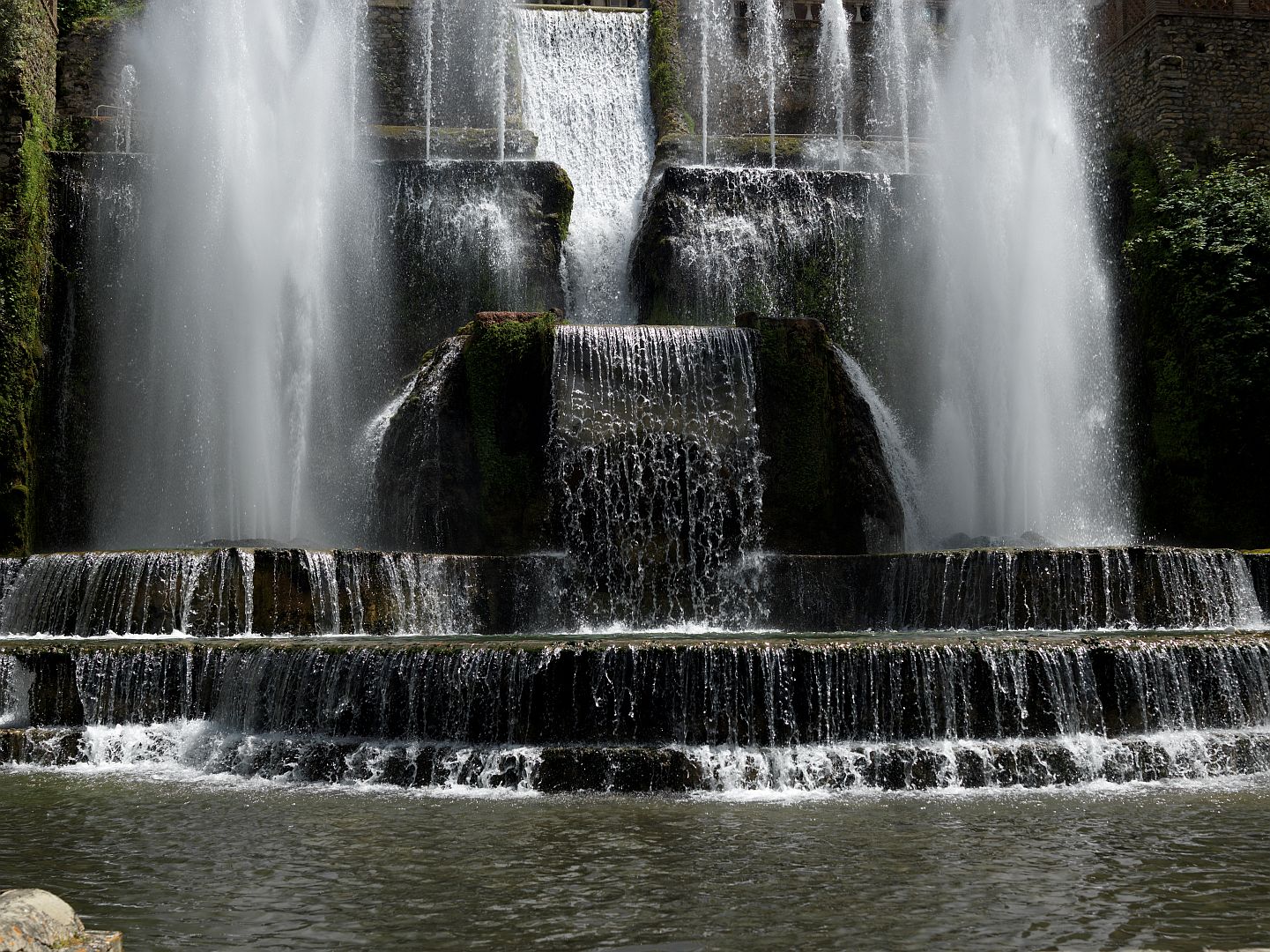
The Town
The town of Tivoli is pleasant enough, and occasionally one happens upon a view that seems strangely familiar. This is because Tivoli had a few ancient Roman remains lying about and was close enough to Rome to be visited frequently by 18th Century grand tourists. This in turn created a market for so-called veduta (or “view”) paintings and prints. The original veduta paintings were highly accurate representations of real scenes, like those of Venice by Canaletto. In places like Tivoli a distinct sub-genre emerged, which was of old ruins in romantic settings. Initially realistic, these quickly became even more romanticised at the expense of strict accuracy. You can see second-rate examples of such paintings by the score in provincial Italian museums in places where all the good stuff was pinched by Napoleon. A typical example might contain a ruined temple half-overgrown with ivy, with a broken column in front of it and in the foreground a lonely shepherd leaning on his staff, or a couple of blokes in tricorn hats, one gesturing with his stick to illustrate the vanity of human pride, or the transience of worldly glory, or something. This veduta genre was like statue-busking today; the first person to do it was very original, and most weren’t.
One such view of Tivoli can still be seen, and is where the Aniene river runs out of the Sabine Hills, down into a gorge and over a waterfall, past the remains of a Roman temple, variously described as “The Temple of the Sibyls” or “The Temple of Vesta”. Of course you have to mentally block out the hotels and bars in the frame, so you can see why the vedutisti painters took a few liberties.
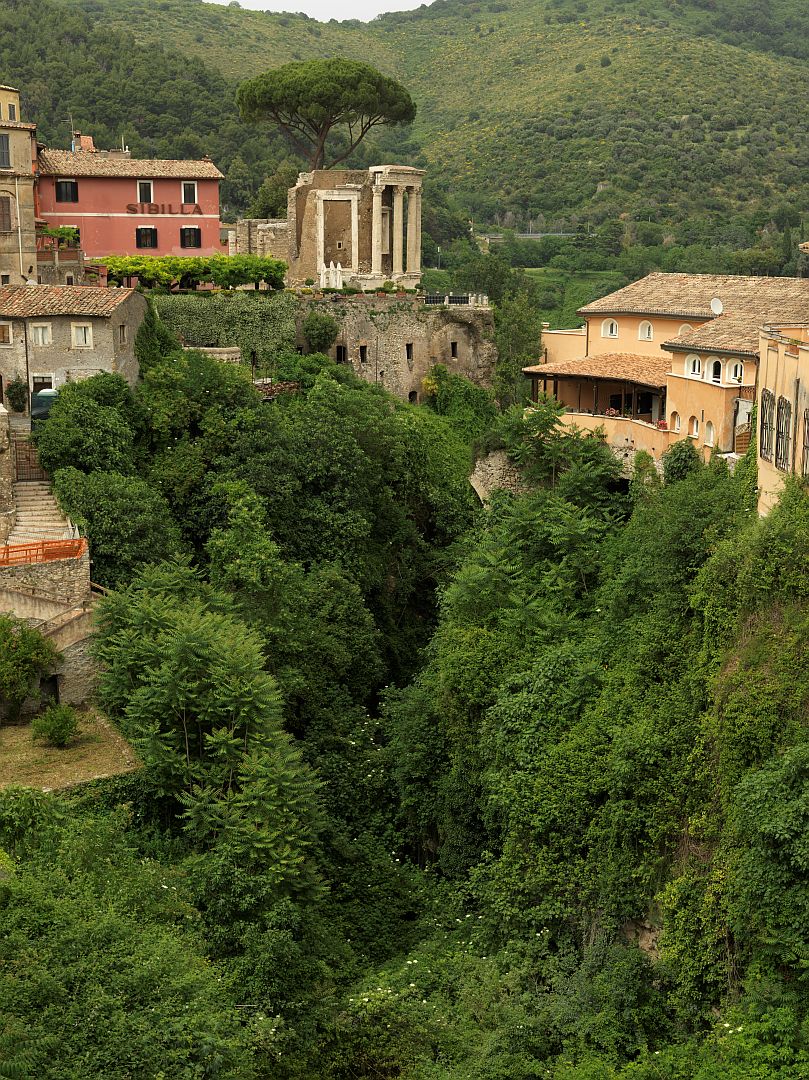
The Villa di Bruto (Villa of Brutus)
As I said, during the classical period wealthy Roman families built villas in Tivoli. Our B&B had the grandiose name of “Antica Villa di Bruto” meaning “Ancient Villa of Brutus” but we had taken that with a pinch of salt. When we checked in, the chap who ran the place asked if we were interested in seeing some of the Roman remains in the grounds. We said yes out of politeness, expecting to see a few stones in the olive grove out the front. The next morning we were shown around by the manager’s brother, whose wife is the owner of the property.
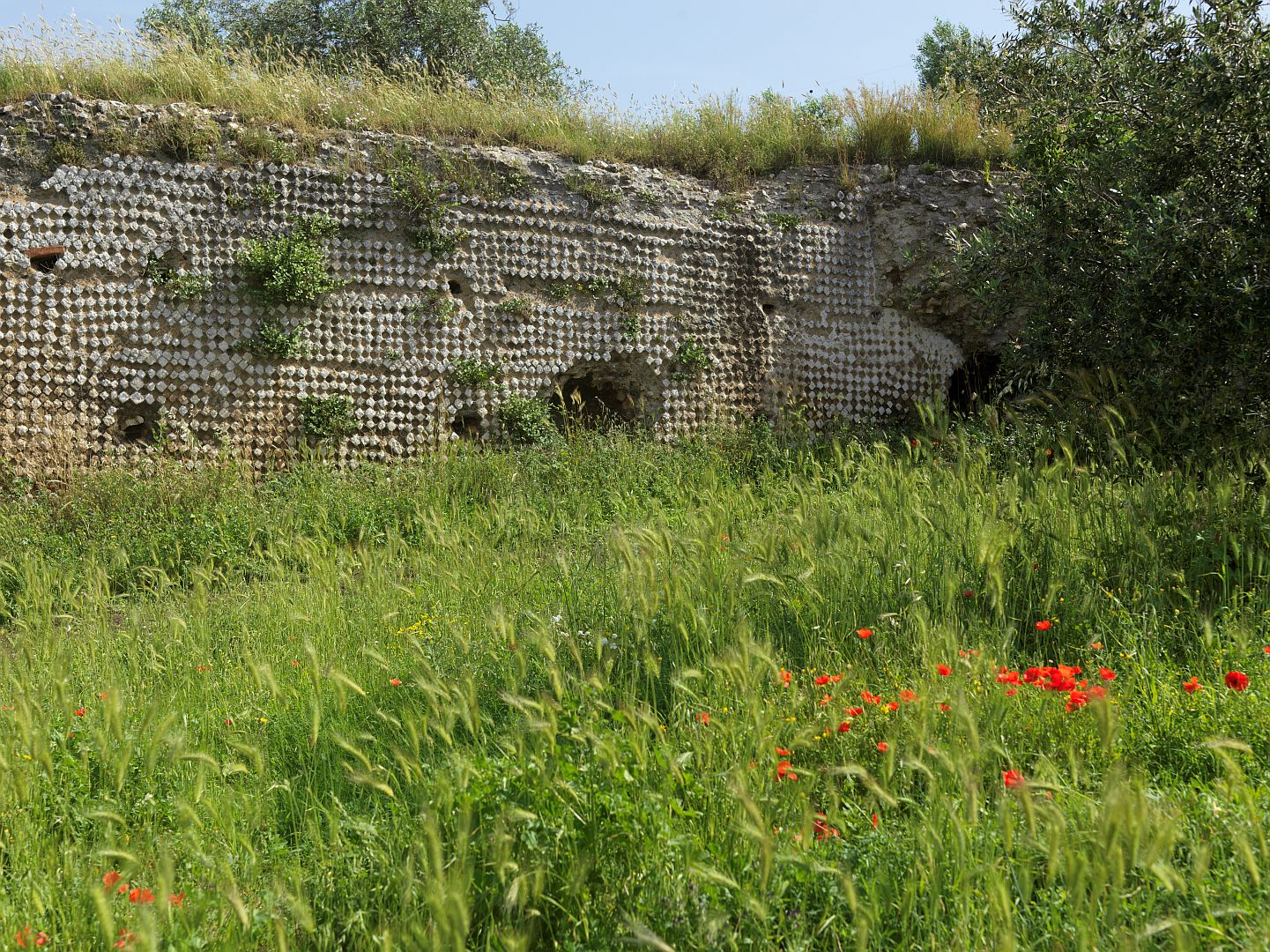
The archaeological remains are extensive – they include large cisterns on which the present house is built, and, down the hill under the olive grove, extensive rooms and galleries. Much remains underground, and cannot now be excavated without state approval. Of what has been excavated over the past couple of hundred years, there is evidence that frescoes and statuary have been illegally taken. The olive grove that sits over the bulk of the remains is also pretty ancient – the oldest trees have very wide and gnarled trunks and look as if they had been drawn by Arthur Rackham. Our host estimated that the oldest are six or seven hundred years old.

There seems to be some historical basis for believing that the Villa was owned by the Brutus family, of which Marcus Junius Brutus, one of Caesar’s assassins, is the most famous. The attribution of the property to the Bruti is at least a couple of hundred years old as there is a fairly well-known print of the place dating from 1794 – doubtless drawn with the usual artistic license.
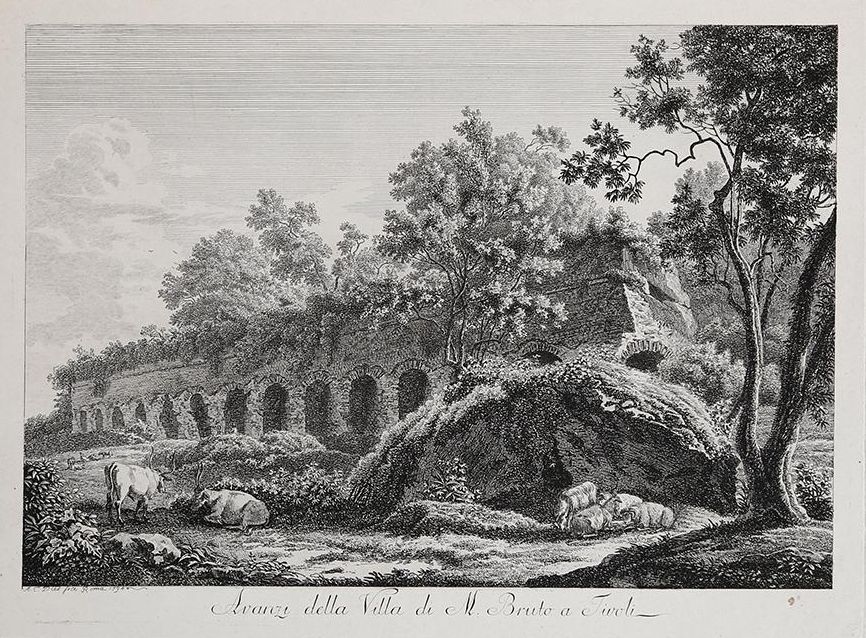
The Villa Adriana (Hadrian’s Villa)
About 5 kilometres down from the town of Tivoli, but before the hills descend fully to the coastal plain, there is a very large archaeological site called the Villa Adriana, which is the “villa” of the emperor Hadrian. I say “villa” in quotation marks because it covers about 80 hectares or 200 acres and was actually more like a small city. There were artificial lakes, fountains, temples, offices, baths and boulevards. There is an excellent model of the villa in the visitors’ centre and I include a photograph below. As you can see, it was a humble little place.
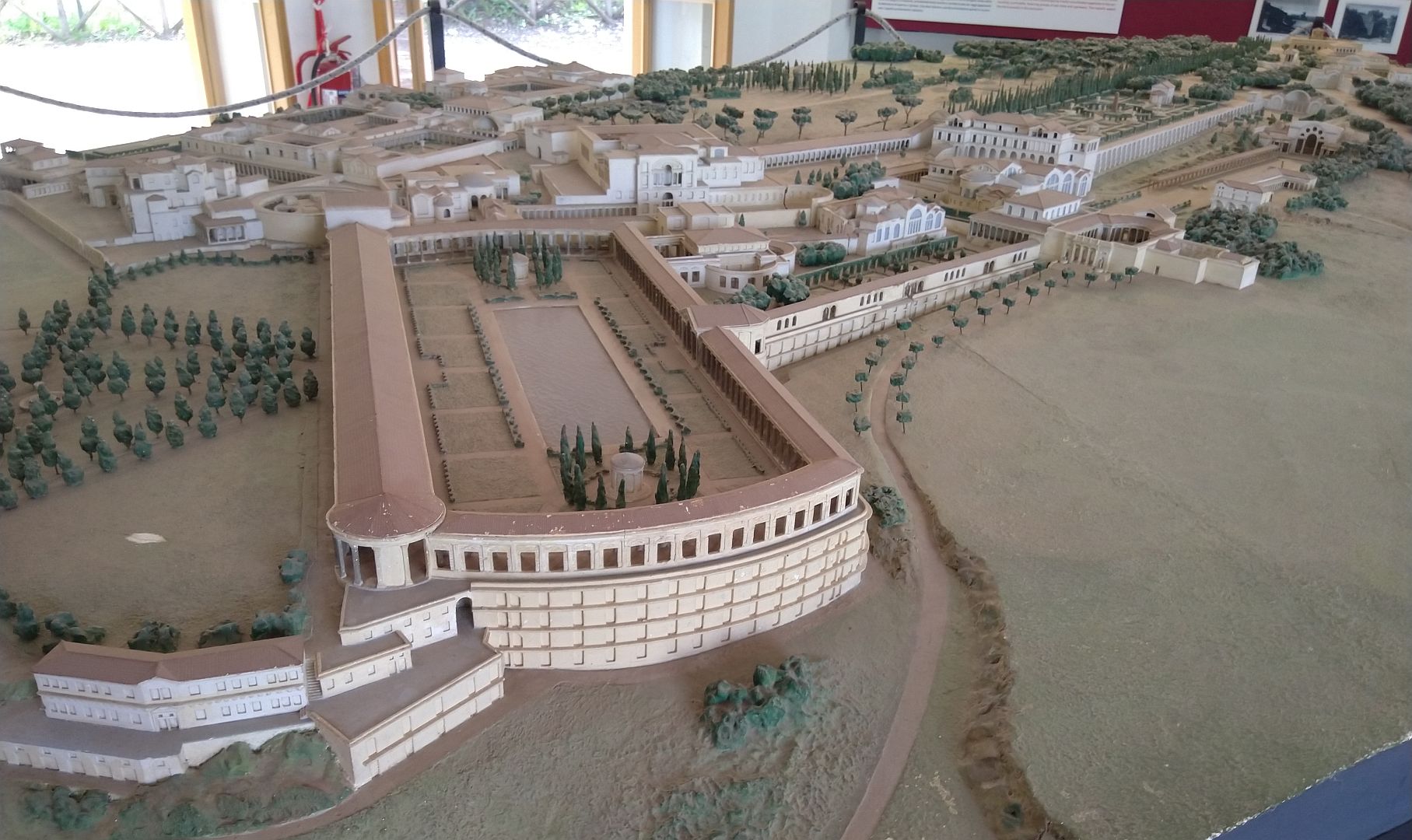
At a time when the standard treatment for a newly-discovered ancient marble statue was for it to be burnt for its lime content, it was actually a bit fortunate that the Villa Adriana started to be excavated when Ippolito d’Este was in charge, because he actually cared about antiquity, and was rich enough not to need the money to be had from recycling ancient remains.
Hadrian is of course known in the English-speaking world as the builder of Hadrian’s Wall (as defended by Parnesius in Puck of Pook’s Hill) but he was a prolific instigator of building projects all around the periphery of the empire. Unlike most of his predecessors, he often travelled to these remote provinces in person rather than taking reports from local officials. In doing so he appeared to apply a more consistent approach to the long-term defensibility of the Imperial borders.
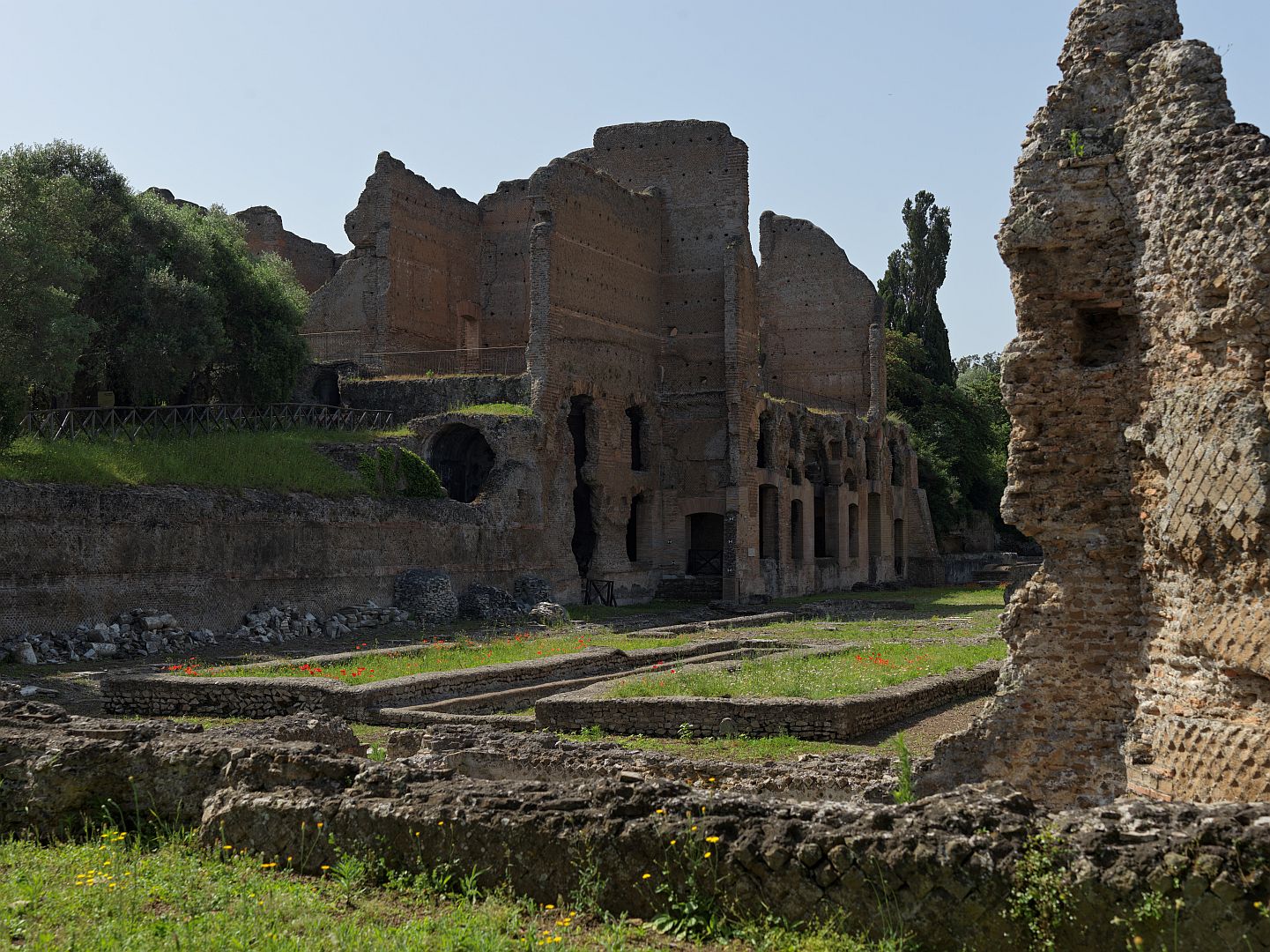
According to the sources quoted in Wikipedia, he was a keen architect himself and rated his own talents quite highly, so it seems more likely than not that the overall plan of the Villa Adriana, as well of the designs of the major buildings therein, bear his personal stamp.
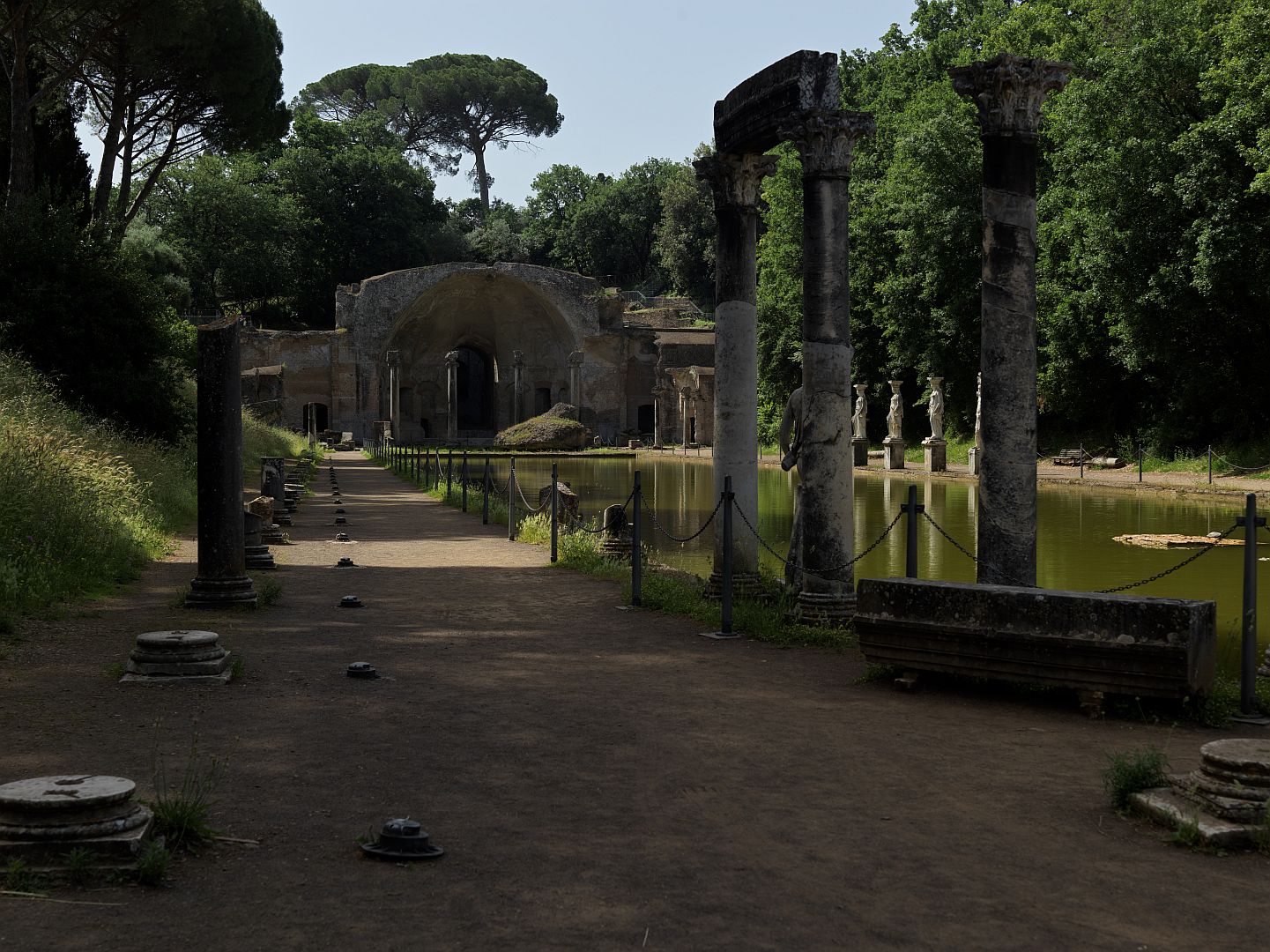
The combination of the size of the villa and a surprisingly small number of visitors meant that it was less crowded than the Villa d’Este by a couple of orders of magnitude and we strolled around happily in the hot sun mostly by ourselves for a couple of hours.
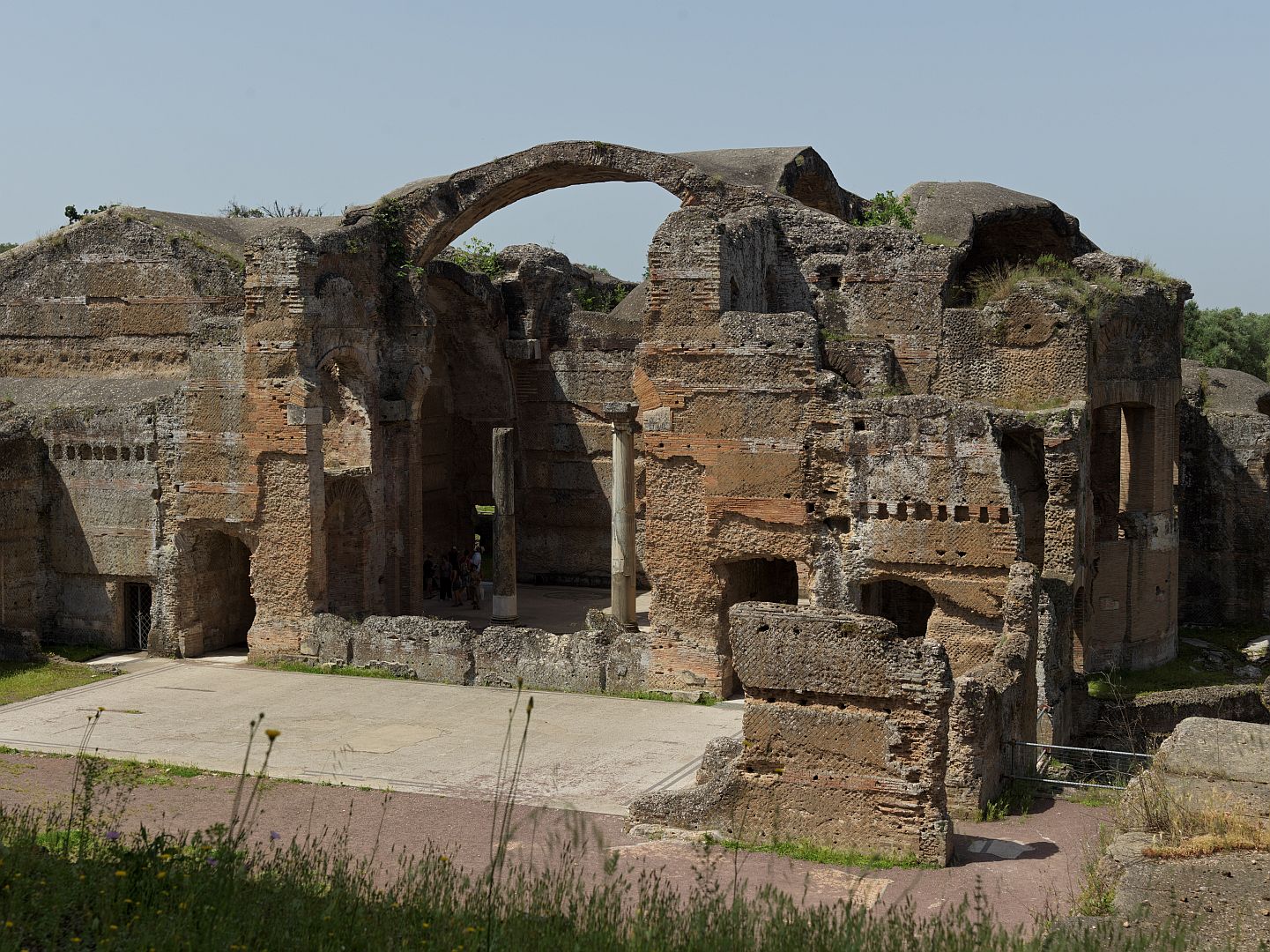
I was speculating that the size of the place was due to the fact that when the Emperor was in residence, it would have been the de facto centre of government of the empire. So – a purpose-built place up in the hills, full of pretentious architecture and artificial lakes, populated by government officials who were forced to move there reluctantly from the real city. “Just like Canberra then” said Lou.
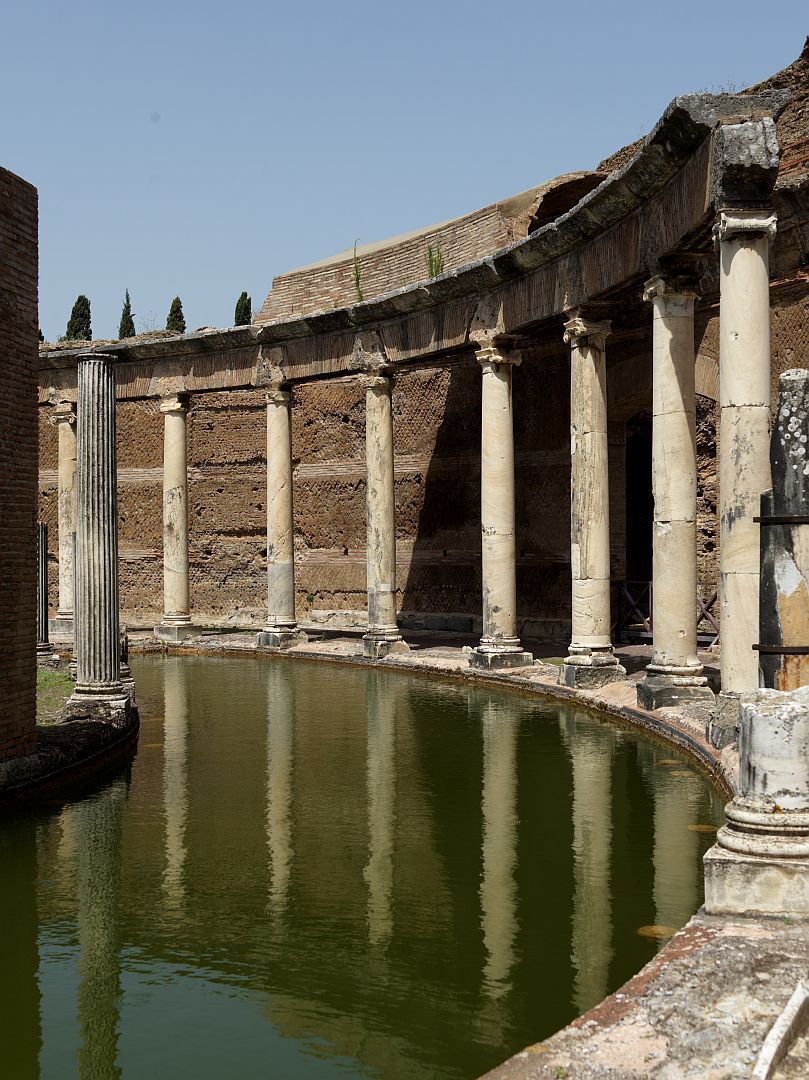

2 Replies to “Villas and Vistas in Tivoli”